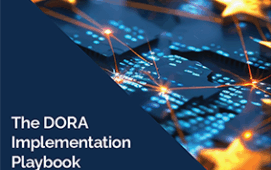With the pressure of initial implementation now a distant memory, MiFID II-regulated firms are turning their attention to the real work required to create sustainable long-term solutions. For many, the race to meet the January 3 deadline meant implementing temporary compliance processes that were far from perfect. Unless updated and improved, these could lead to operational, compliance and reputational risk exposure in the future.
MiFID II this year introduced sweeping changes to trading, processing and reporting requirements for non-equity transactions as well as substantial updates around cash equity best execution, trade and transaction reporting. To comply, financial services firms have had to change the way they do business, and how they report their activities both to the marketplace and to regulators.
Many of the processes put in place to meet the January deadline were more patches than perfect, and firms are starting to recognise that to achieve and maintain sustainable MiFID II compliance over time – effectively, efficiently, and at scale – they must take a broader long-term approach.
They will have to comprehensively rework their trading operations and the IT systems that underpin them, otherwise they will be exposed to operational, compliance and reputational risk in the future.
This process of industrialisation can be complex, and consistency of processing and of messaging across trading infrastructures is of vital importance in order to effectively feed downstream workflows. But how can this best be accomplished?
The first step is to centralise the data management process within the trading workflow – including data normalisation, enrichment, validation and flexible routing. This has the valuable effect of de-coupling reporting workflows from front-office and middle-office systems, which in turn reduces the “architectural inertia” that is inevitable if every reporting requirement triggers multiple changes to multiple systems – unnecessary, under a centralised system.
Solutions such as ULLINK’s UL BRIDGE offer firms the agility, scale and reliability they need to centralize trade data management workflows, including those needed for MiFID II compliance.
But it is not only MiFID II that should drive this decision. The regulatory environment is constantly evolving and further change looks inevitable. In much the same way as RegNMS changed the US landscape, MiFID II is set to irrevocably alter the operating environment for financial services firms – and, concurrently, shake up the competitive landscape for technology solutions.
To thrive in this brave new world, firms need to put in place a robust methodology for manipulating trade and related data external to the originating systems, which will allow them to scale up easily and respond rapidly to structural change.
Subscribe to our newsletter




